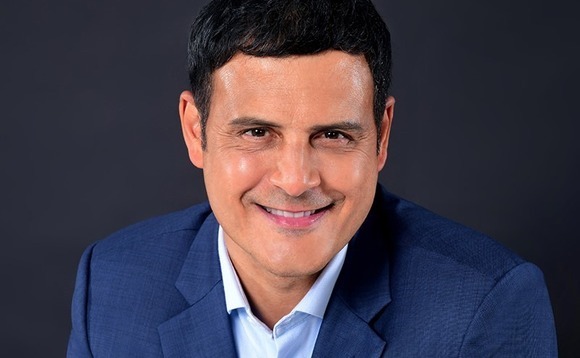
Q&A: Novo Holdings' Amit Kakar

Having spent the past three years on healthcare buy-and-build platform Everlife Asia, Amit Kakar’s is joining life sciences investor Novo Holdings as regional head. He explains why now is the time to bet big on Asia
Novo Holdings is responsible for managing the wealth of the Denmark-headquartered Novo Nordisk Foundation, which owns controlling stakes in diabetes care specialist Novo Nordisk and bioinnovation player Novozymes. It has $62 billion in assets, of which $19 billion is deployed in financial and life sciences investments. The life sciences portfolio is split into four strategies based on size and maturity: principal investments, growth, venture, and seed. It looks to deploy $1-2 billion per year.
Q: Why is Novo Holdings looking to focus on Asia now?
A: Asian life sciences markets have been growing robustly and we have been following them closely. We have seen a lot of activity in biotech and medtech, with a movement away from me-too products more towards innovation. Disease demographics have also been changing. We are seeing more chronic diseases that require very different management, very different capital expenditure. Given where the industry is heading, it's a compelling time to see how we can bring some of our best practices from the US and Europe and finetune them for the Asia requirement.
Q: How much do you expect to invest in the region?
A: The first step is understanding the landscape better. Once we have done that, we can make decisions on capital deployment, but flexibility will be there, depending on the deal size and opportunities. We have deep pockets and we are patient capital. In the US and Europe, last year was one of the most active for us in the venture space. We made 21 new investments and 34 follow-ons, deploying close to $400 million and building a fantastic array of companies.
Q: What are your recruitment plans?
A: We have teams for all our strategies in Europe and we are building our principal team in the US. We have offices in San Francisco and Boston. I am the first person to come on board in Asia. There is a clear mandate to build a team here. It won't be as large as Europe, but we will hire people in Singapore and put a team in China. We expect China to be one of the biggest opportunities, so we want to have people on the ground.
Q: Could you feasibly hold investments forever?
A: Unlike many PE funds, we don't have this cyclical challenge where we need to show exits to raise capital for the next fund. Our holding period is longer – we are not in a rush to exit; we believe in long-term value creation with our partners. We can also provide follow-on capital. What often happens, especially in healthcare, is that companies require more capital within four or five years of the initial investment. Sometimes when a PE firm has invested from a particular fund, it cannot top up, so it has no choice but to dilute and exit or see someone else come in and invest. Having said all that, if we get the right opportunity to exit, we'll take it.
Q: Valuations have risen in Asia in recent years. How do you get comfortable with that?
A: Valuations are very frothy. Although there's been a bit of a correction, healthcare is one of the hottest sectors. We want to differentiate ourselves. We won't chase very high valuations. Rather, we will try to put our brand name on the table, our experience in Europe and the US, and leverage some of our portfolio companies that have a presence in Asia.
Q: There is also a lot of risk investing in early-stage biotech companies…
A: Our focus is on companies in phase-one and phase-two trials. By the time you reach phase three the capital requirements get very high as they enter large-scale trials. At the end of the day, it falls back on the team's knowledge, depth of experience and understanding of the sector. We take all that into account in the risk-reward mechanism before we pull the trigger. For example, our portfolio companies have done a lot of work on orphan drugs. I asked why and they said that over the years the team has developed a level of expertise in understanding the risk-reward for this category of drugs.
Q: What sort of innovation are you seeing in medical technology?
A: There are still a lot of me-too products out there. Medtech is going the generic pharma way a bit. So many companies in India and China are now offering digital x-rays in the diagnostics space – there's little differentiation, it's all about pricing. I prefer the term healthtech – I think medtech categorizes products very narrowly – and I want to take more of a disease-based approach, rather than classify everything as hardware. How can we better manage oncology diagnosis and treatment today? What are the new developments in cardiovascular treatment? What is the revolutionary technology that goes end-to-end in muscular skeletons for orthopedics? That's what I am interested in. Take oncology: diagnosis is becoming very important; specifically, how quickly can you diagnose different kinds of cancers. Liquid biopsy is therefore an interesting area. We focus on products that are commercially ready and need capital for distribution or to grow the manufacturing base. There are some new leading-edge technologies emerging in Asia. Not all countries are doing it, mainly China, Singapore, Australia, Japan, and Korea.
Q: Where does artificial intelligence (AI) come into this?
A: I have been talking about AI since my GE days when we called it computer-aided diagnostics, or CAD, and used it as an automated imaging tool to diagnose diseases. We were trying to use MRI to do patella imaging, but it took us six days to do our first image analysis because the computers were so slow. This was 2001. Over the last four or five years there has been a lot of talk about deep learning, but no one has fully realized the clinical and diagnostic potential.
Q: Which areas are most interesting?
A: Wherever there is practical usage of the product, we are interested. If you look at the different spectrums where we think it makes a big difference, one is data diagnosis. For example, we invested in a US company that allows you to interpret a lot of data and see how treatments can be modified for certain types of cancer. Then there's diagnostic AI. The most common imaging performed in any hospital is a lung x-ray. On average, a radiologist will go through no less than 100 of these a day, of which 90 are clean. How can technology help him spend more of his time looking at the x-rays that have some pathology in them? That's where AI is changing productivity and the ability to see more patients and make accurate diagnoses. There is a Singapore company called Eko.ai that helps a cardiologist – who may not be well trained in looking at echocardiography – to identify valvular malfunctions or defects. And then there's biotech, where AI tools being deployed to better access data and decide which molecules to pursue. Previously, this would have taken more than months.
Q: What about the legal and ethical issues around AI-enabled diagnosis?
A: There is a lot of hype around AI, but few incorporated or integrated tools are available right now. While a lot of large vendors are starting to put AI tools alongside their diagnostic platforms, it's almost impossible to say doctors will become 100% reliant on these tools. It's more confirming or reconfirming what you think is appropriate or picking up something you've missed. And this is the low-hanging fruit – where they have become the assisting tools or they have become more of a complementary tool, rather than replacing any readout or diagnosis. The big revolution in AI and deep learning will be in better disease management. You analyze data from 10,000 breast surgeries in terms of what patient, what age group, what type of cancer and you ask how treatment could be modified going forward. A lot of work is happening right now on providing relevant data consumables. Doctors will be able to say, ‘Here is a lot of data that earlier we didn't have access to. After considering a case, let's see how these data can help us treat this patient.'
Latest News
Asian GPs slow implementation of ESG policies - survey
Asia-based private equity firms are assigning more dedicated resources to environment, social, and governance (ESG) programmes, but policy changes have slowed in the past 12 months, in part due to concerns raised internally and by LPs, according to a...
Singapore fintech start-up LXA gets $10m seed round
New Enterprise Associates (NEA) has led a USD 10m seed round for Singapore’s LXA, a financial technology start-up launched by a former Asia senior executive at The Blackstone Group.
India's InCred announces $60m round, claims unicorn status
Indian non-bank lender InCred Financial Services said it has received INR 5bn (USD 60m) at a valuation of at least USD 1bn from unnamed investors including “a global private equity fund.”
Insight leads $50m round for Australia's Roller
Insight Partners has led a USD 50m round for Australia’s Roller, a venue management software provider specializing in family fun parks.





